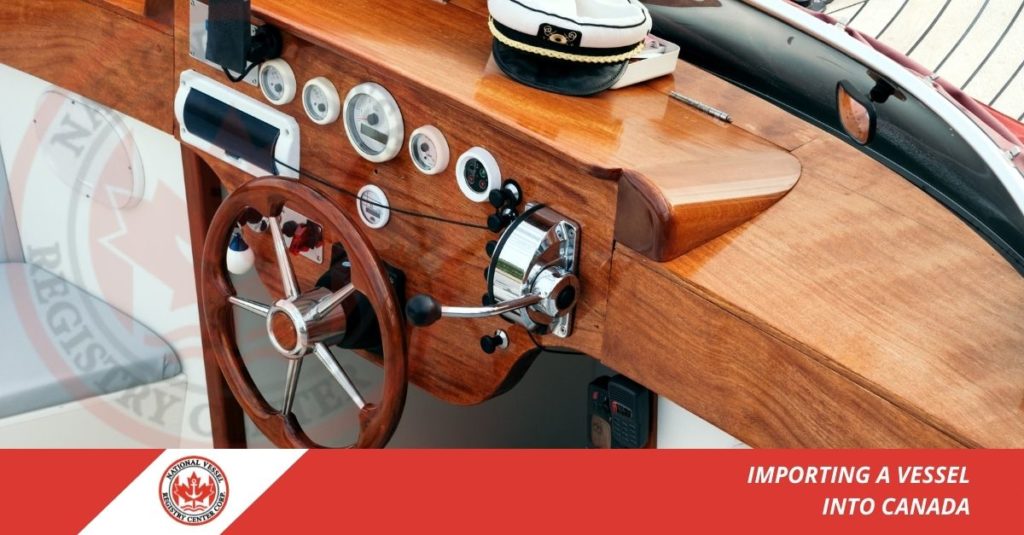
If you are an avid boater, there are not many destinations more appealing than Canada. With bountiful lakes, endless rivers, and ample coastlines, the friendly nation that sits atop North America can be a sportsman’s paradise. If you are thinking about a move that would permanently place your boat north of the border, you are going to want to familiarize yourself with the process of importing a vessel into Canada.
A move can result from a wide variety of occurrences. Maybe your job has transferred you to a Canadian office. Perhaps you have purchased a cabin in the wilds of the north. Whatever your reason may be for importing a boat from the U.S.A. to Canada, there is an official process that must be followed.
If you sit and think about it, this really is not too surprising. If you have ever moved to a different state, you have had to obtain a new driver’s license. There is a very similar paperwork principle involved when moving a boat into Canada.
The reasons for this are manifold. For one, Transport Canada–the government agency tasked with regulating commercial and recreational water activity–likes to keep an accurate database of boats on the nation’s waters. This ensures sound due diligence in the creation and enforcement of laws and regulations. There are also tax considerations–as a boat can be a sizable asset, the Canadian government may want to be apprised of its value.
How to Import a Boat from the U.S.A. to Canada
So, your new employment is in the process of being established. You have located a new home and are into the closing stages of the transaction. Your motor vehicles are all registered in your Canadian province. Forgetting something?
Importing your boat to Canada calls for a bit more than simply hitching it to your truck and driving across the border. Fortunately, however, the process is not too strenuous, and as you will read later on, the National Vessel Registry Center can make it even easier for you.
When you get to the Canadian border checkpoint, the first thing you will have to do is declare your boat. This declaration will entail the presentation of a bill of sale and proof of ownership. You will also need to outline any taxes paid and the cost of your boat’s survey.
You will also need to make the border agent aware of any claims of lien against your boat. It is in your best interests to be truthful about how you came to possess your vessel as well as its price. If your boat was manufactured outside of North America, there is also a possibility that you will need to pay a federal duty–though that is a somewhat rare occurrence.
Getting Your Boat Licensed or Registered
So, you made it past the border and customs gave you the all clear. You may be thinking that your prized boat has been formally adopted by the nation of Canada. Before you drop your vessel in the water, however, there is some additional paperwork that you will need to complete.
In truth, your boat is not officially a Canadian vessel until it has been licensed and/or registered. To obtain your Pleasure Craft License (PCL), you will need to complete an application and submit some supporting documentation (bill of sale, proof of government identification, and more) to Transport Canada. A PCL is required for all motorized boats with a horse power greater than 10.
You may find, however, that vessel registration is a more logical choice for you. While the wording can be somewhat confusing, a registration is different from a PLC. Any boat used for commercial purposes must be registered. It is also required for any vessels traveling on international waters while flying the Canadian flag. If your boat carries a marine mortgage on file with Transport Canada, it will also need to be registered.
Even if your boat does not fall within the parameters for required registration, there are benefits to doing so. For one, it eliminates the need to obtain a PCL. Secondly, it will give your boat a completely unique name. And lastly, it can help in the recovery process should your boat unexpectedly become lost or stolen.
Submit Your Forms Online with Our Help
If you are looking to import a vessel and get it licensed or registered, there are a couple of avenues available for doing so. The easiest way is to submit an application with us at the National Vessel Registry Center.
We are a private service that offers easy-to-complete online forms for vessel registration, pleasure craft licensing, transfers of ownership, and much more. To learn more about our services, take a few minutes to explore our site, or contact one of our customer service representatives today.
